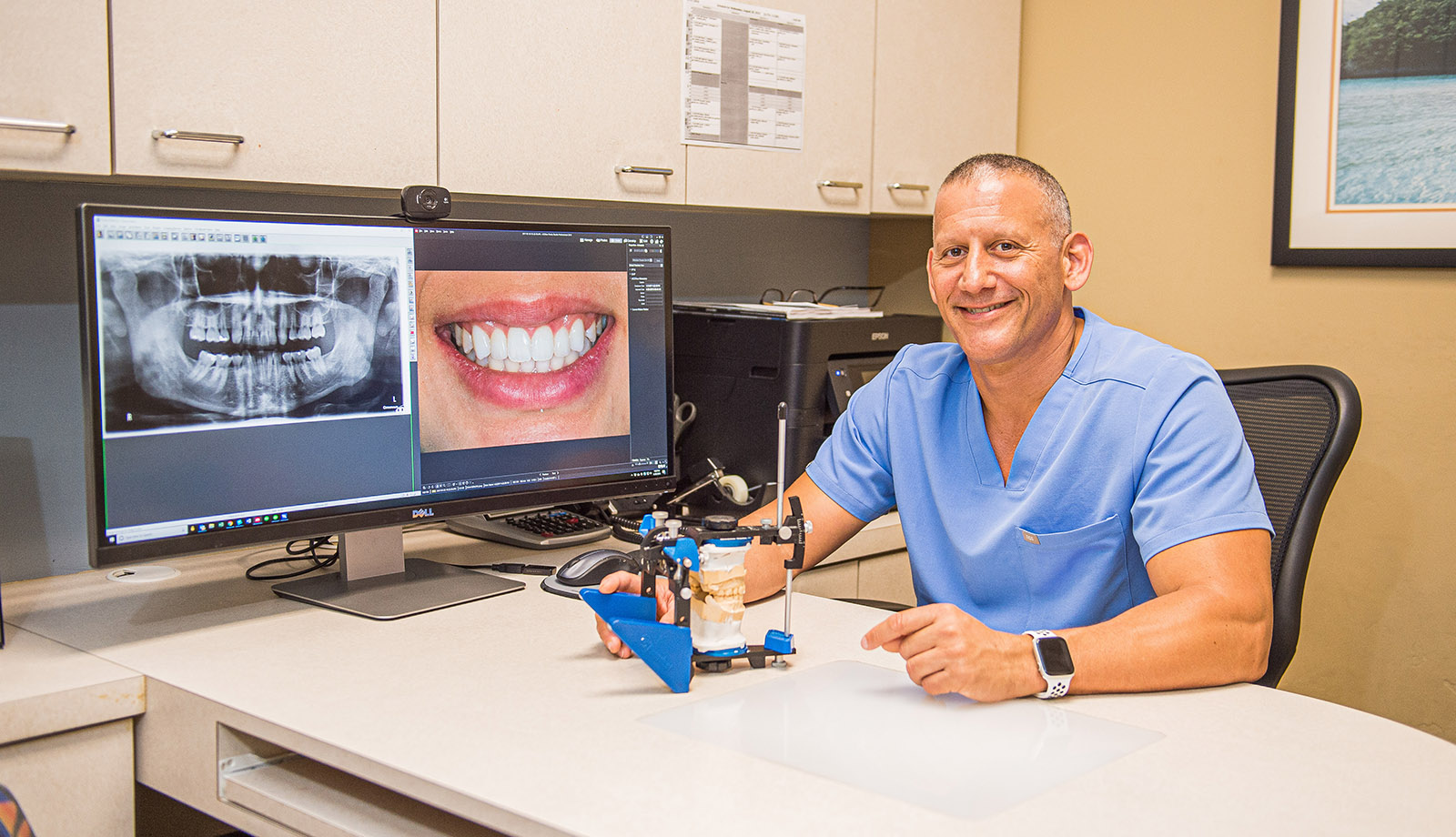TMJ Treatment

TEMPOROMANDIBULAR JOINT DISORDER
Temporomandibular joint disorder (TMD) refers to a group of related disorders that result from problems with the jaw or jaw joint, or the facial muscles involved in jaw movement. The temporomandibular joint (TMJ) is the small joint located in front of the ear where the skull and lower jaw meet; it enables the jaw to move and function normally and is one of the body’s most frequently used joints. Talking, yawning, chewing, and swallowing all involve the TMJ. For the TMJ to function properly, the muscles, ligaments, and bones involved in its movement must be working properly; any conditions that prevent them from doing so may cause TMD.
TYPES OF TEMPOROMANDIBULAR JOINT DISORDER
TMDs are usually categorized in one of three ways.
MUSCLE DISORDERS
Muscle disorders cause pain and discomfort (myofascial pain) in the muscles surrounding the jaw joint, and in the muscles of the shoulder and neck. This is the most common type of TMD.
JOINT-DERANGEMENT DISORDERS
Joint-derangement disorders are structural, as opposed to muscular, conditions. They can be caused by injury to the lower jaw; wear on the joint, such as from bruxism; severe malocclusion; repeated excessive jaw movements; or the dislocation or displacement of the articular disc, which is a component of the TMJ.
DEGENERATIVE/INFLAMMATORY JOINT DISORDERS
The overuse or aging of the joint can cause degeneration and/or inflammation. This may be a result of osteoarthritis, rheumatoid arthritis, or a perforated TMJ disc. A patient may experience one or more of these disorders at the same time.
CAUSES OF TMJ
What causes TMD is not clear, but symptoms are believed to develop from problems with the jaw muscles or with the joint itself. TMD may be the result of many factors, including the following:
- Trauma to the head or neck
- Clenching or grinding of the teeth
- Bad “bite” or missing teeth
- Arthritis
- Malalignment of the upper and lower jaws
Stress may also play a role in developing TMD because it can lead to the tightening of jaw muscles and clenching of teeth.
SYMPTOMS OF TEMPOROMANDIBULAR JOINT DISORDER
TMDs can cause discomfort and pain that is constant or intermittent, with symptoms that can include:
- Chronic pain in the face, jaw, neck, and shoulders
- Chronic pain in or around the ear
- Limited ability to open the mouth wide
- Difficulty chewing
- Uncomfortable “bite”
- Swelling on one or both sides of the face
- Clicking or popping noises when opening the mouth
- Headaches and neck aches
DIAGNOSIS OF TEMPOROMANDIBULAR JOINT DISORDER
In order to diagnose TMD, a physical examination, as well as the following tests, may be performed:
- Clench test
- X-rays
- CT scan or MRI scan
- Computer bite analysis
- Joint-vibration analysis
Many tests for diagnosing TMD are designed to rule out other conditions that may be causing the same symptoms.
TREATMENT FOR TMJ
Treatment for TMJ depends on the severity of the condition, and may include:
- Stress-reduction exercises
- Muscle relaxants
- Low-level-laser therapy
- Mouth protectors to prevent teeth-grinding
- Changing the diet to soft foods
- Heat or ice packs
- Avoidance of extreme jaw movements
More extensive corrective treatments include injections for pain relief. If nonsurgical treatment is unsuccessful or if there is joint damage, surgery may be needed. Types of surgery performed for TMD include:
- Arthrocentesis
- Arthroscopy
- Open joint surgery
Although TMD can be a chronic condition, it can be effectively managed with proper treatment.
SPLINT THERAPY
Patients who have temporomandibular joint problems sometimes require functional splint therapy. A clear thin rigid appliance is worn on the upper teeth to create an ideal bite. The goals of this treatment are to:
- Properly diagnose the patient’s condition before doing any treatment
- Get the chewing muscles to relax and stop spasms
- Generate ideal biting forces evenly and ideally over the appliance
- Naturally, get the jaw joint in the socket where it functions optimally
- Find the patients ideal natural bite
- Make the patient comfortable and pain-free
TMJ TREATMENT PROCESS
After a thorough investigation of your tooth positions and the way your teeth fit and work together along with a careful analysis of your jaw joints, Dr. Addario of Chula Vista will create a treatment plan to establish perfect harmony between all parts of the chewing system and restore your teeth to their optimal shape and relationship. This results in a healthy, highly functional, and beautiful smile.
TMJ TREATMENT RESULTS

